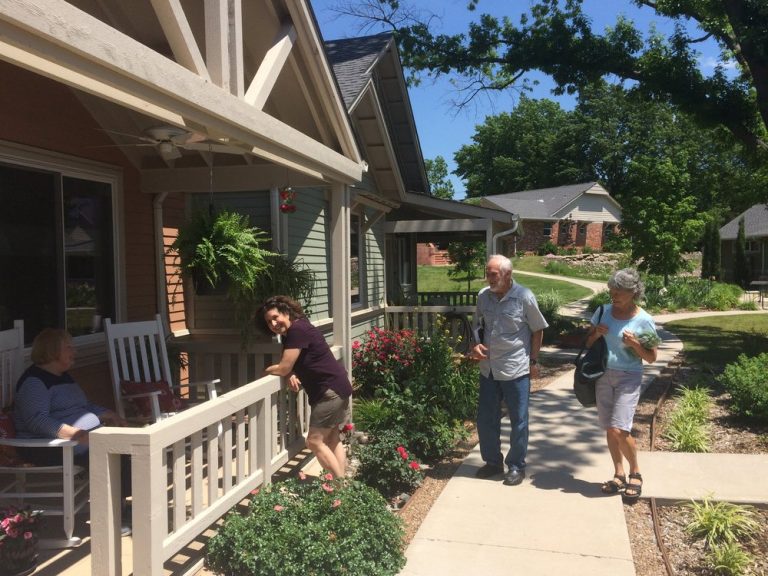Did you miss your chance to live in a commune in the 60’s? You may get another chance in your 60’s!
Senior co-housing is becoming a popular alternative to the isolation many of our elders tragically face these days.
Whether it’s in a nursing home or an empty nest in the suburbs, the elderly are often doomed to live like ghosts in modern, industrial society.
Like everyone else, they deserve to live in community, and now they can thanks to a growing trend.

There are currently 165 senior-friendly co-housing communities in the United States, with 13 of those dedicated solely to seniors, according to SeniorLiving.org.
Co-housing communities are intentional neighborhoods (meaning you choose your neighbors) made up of 20 to 40 single-family or attached homes.

The homes are arranged in a circular fashion, facing inward toward shared green space, instead of in straight rows facing the street.
Instead of driveways and individual lawns to maintain, there are walking paths connecting neighbors and shared gardens to tend.

In addition to private homes, co-housing communities include a central “common house” with a large kitchen and dining room for community meals; a “living” space for cozier conversations, card games and tea; and a laundry room, so residents can get a little work done while they socialize.
Seniors can choose to live in a general co-housing community or one strictly for ages 55 and up, depending on their lifestyle preferences.
For example, some seniors prefer more of a family structure with the company of younger adults and children. Others prefer a quieter, slower pace of life with friends their own age who share common interests and hobbies.
In either setting, co-housing seniors are encouraged to contribute their talents to the community – cooking a weekly meal, landscaping, or organizing community outings, for example.

Top 3 benefits of senior co-housing over nursing homes:
1. Community. The ultimate goal of co-housing is to encourage regular social interaction and economic cooperation among residents. Unlike in nursing homes, where seniors are often bunked with halls full of strangers, co-housing allows the elderly to choose their neighbors.
Residents garden together, cook together, knit together and launder together if they feel like it, and retreat to their own space when they don’t.
2. Privacy. While many retirement communities offer private living units, they are often in close quarters, like rooms in a dormitory or studio-sized apartments.
Cohousing communities offer more privacy, with larger full houses or “townhouses” with more space in between.
3. Economy. By combining the best of both worlds – private dwellings in a communal setting – seniors give themselves an economic advantage.
Unlike assisted living communities, senior co-housing communities are founded and run by the members themselves.
Instead of paying for high-priced “care,” members are expected to rely on and take care of one another.
In addition to the money they save on shared property, they can carpool, remind each other of appointments or to take medications, and generally keep an eye out for each other.
To find out if there’s a co-housing community near near you, check out SeniorLiving.org.

